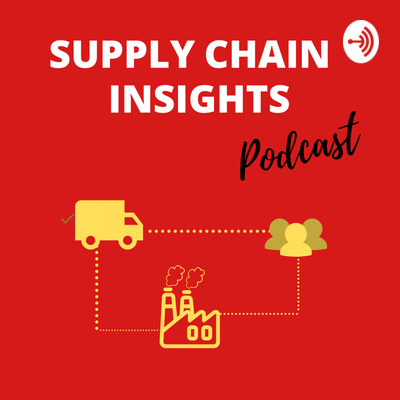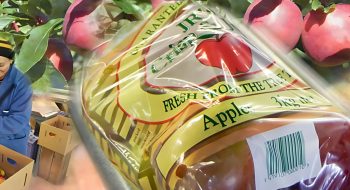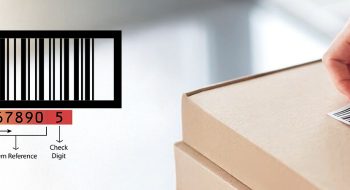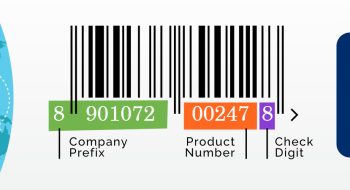This episode of our podcast focuses on explaining traceability to brand owners and what should they look for in a traceability solution?
Supply chain visibility is generally the starting point for predicting demands, gaining visibility, sustainability, ensuring effective recalls and safeguarding business from counterfeit. But things are generally not simple as they should be. Various applications and systems being sold promising to meet that need but how should one evaluate them. Let’s find out.
Transcript:
Hello, friends! This is our first podcast of the series – Supply Chain Insights. Here, we will discuss various supply chain issues, global standards to address them, and their benefits to consumers and different industry stakeholders.
Today, we have with us Mr. Bijoy Peter, to help us understand some of the basics of a traceability solution and why should manufacturers have it? Bijoy has been working closely with the Indian industry for over 10 years. In this time span, he has worked with organizations of all sizes, studied their needs and consulted them on selecting and implementing the right traceability solution.
So, Bijoy, let me start by asking what is traceability and why do you think that Indian brands need it when government recalls are unheard of in Indian scenario?
Traceability is an important business requirement in today’s context. Primarily, because the consumers are increasingly getting conscious about products, which they buy and consume. If anything goes wrong during the transit process in the supply chain or during the production process, etc., or if any product withdrawals need to be made, it is very much required for the brand owner to know which product is lying where in the supply chain. In today’s context, the supply chain is not just regional, it can be at a national level and it can even cross borders. Also, it helps in safeguarding the brand image because today, the impact of social media networking sites is huge. If a consumer finds something wrong in a product, that message can spread like wildfire and brand owners may not have much time left to take corrective actions.
Besides non-food and non-healthcare categories, is there any other product category that requires a traceability system? If yes, why?
Every product has got a shelf life. If you look across industries, be it food, beverages, personal care, healthcare, agriculture, even in technical industries, you can see that every product has got a shelf life, or every product is perishable in nature. The life of the product could be 1 day, 1 month, 1 year or may be a few years. Most of the times, it is important for a brand owner to keep track of the batches that are being produced and are released into the supply and logistics network until the life of the product. It is essential for a brand owner to ensure that he has control of what is moving where.
One very interesting thing you have mentioned here. The way you are seeing traceability is the complete visibility of the supply chain. But if something goes wrong in the raw material, can brand owners also trace that using a traceability system?
Yes, they can. Where and in which part in the supply chain you are implementing the traceability system also matters. Largely, brand owners take responsibility of downward supply chain because once they produce the product and it is sent to his distribution network, to his warehousing network, to his retailers, consumers, etc., that is the point where the brand owner generates business. But all these products also have a lot of input raw materials, which he must be sourcing from n number of suppliers. A final product or a finished product can also go wrong because of some defect in the input raw materials. From a perspective of traceability, it is not only essential in downstream supply chain, but it is also essential as far as the upstream supply chain process is concerned.
How do companies generally reach to the need of a traceability solution?
When companies establish a traceability system, it all starts with a basic inventory management in warehousing. They want to automate their inventory process. If you ask them what is the problem they are trying to address by virtue of having some systems in place? They say they are finding issues as their later batches are getting delivered before the earlier batches. Most of the companies find it difficult to maintain the concept of first-in-first-out or the first-expiry-first-out in the supply chain process. If they do not have a proper process in terms of controlling this first-in-first-out or first-expiry-first-out process, they will end up sending products into the supply chain or into the logistics network, which probably would be expiring very soon or which probably will not have a necessary shelf life in place. They will then realize at some point of time that in their warehouse, a huge stock might be lying, which will expire very soon.
Besides expiry management, what is the need for visibility in a supply chain?
The requirement for visibility in supply chain can come up because of various reasons. Most of the product segments in today’s context are vulnerable to counterfeits, diversions, etc. There the use of traceability is primarily to know what is moving where, and from that perspective they can put measures and systems in place in order to avoid diversions, counterfeit products, infiltrations, etc.
If a consumer is complaining about some performance issues of the product and if the brand owner would want to trace it back, and track which batch and what has been the components that have gone into those batch of product and what were the component of those batches because components keep coming and assembling happens and finished products goes into that. If you look at it from that perspective, there the need is different but by and large the system remains the same. They also need downwards supply chain tracking and they also need upwards supply chain tracking. The intention and the use case might be different. So, this is basically in terms of after sales service. Everything will come into place based on how fast the brand owner can respond to such situations. The response level of a brand owner to any consumer complaint originating out of any product, will elevate the consumer trust in that brand.
Are there any characteristics that brands need to keep in mind before selecting a traceability system or is there one system that kind of fits all companies of all sizes?
How to select traceability system is a very subjective question. When you talk about traceability system, for most people, the perception that comes to their mind is that traceability is an application. It is some sort of application where they log in and get report for what is moving where. But that is just one element of traceability system.
So, what is a traceability system?
Traceability system is a composition of best practices, best process management, IT or automation, implementation of IT systems to enable automations, and information capture. Traceability system is very subjection, When we say, traceability system, it involves process improvements – how the brand owner receives his raw materials, how the raw materials will go into the production process, how the finished goods products will be produced, where it is being stored, and from there what are the different locations where the inventory movement happens and how it reaches the retailers and how it eventually leads to the consumers. There are different touch points from the time a product is produced till the time it reaches the consumers.
Also, what kind of systems are required and how the traceability system needs to be implemented purely depends upon what level of tracking and tracing the brand owner wants. It can also be decided based on the sensitivity of the product, which he wants to trace.
Like you said that one needs to have an end-to-end traceability system for it to be effective. What you mean when you say that at what level do you want to track?
Ideally, a traceability system should be end–to–end. But there will be different factors which come into play when any brand owner or any company wants to implement traceability. Most of the companies when they start the business, the focus is around expansion or growth of the business.
Whatever traceability systems or process that they have implemented may not be effective as they scale up or as they expand their business process. So, if someone is taking traceability as a business need right in the beginning, the focus should be on kind of systems he implements. Whatever systems he implements should be agnostic to any kind of vendor dependency, it should necessarily have adoption of standards – what are the best standards in identification, data capture and information sharing is concerned, irrespective of whatever technology is being used. Third aspect of focus should be whether the system or the process or the application which is being implemented would help him to scale enough as the business scales up. In a way it should be scalable, the interfaces should be based on best standards and the business processes needs to be realigned according to achieving the end result of traceability.
Sounds like quite a problem at hand specially for brand owners. How should they tackle this with the right traceability system in place?
The first and foremost step is to establish a link between the physical movements of the goods with the information flow. Then depending upon the criticality of the item that they are tracking or depending upon the value of their tracking, they can decide on what kind of data capture technologies they want to use – whether it’s a barcode, whether it is an RFID or any other data capture technology. Third aspect is that you need to have a system of uniquely identifying the product in your supply chain. Fourth, your system interfaces should be built in such a way that if there are multiple stakeholders who needs this traceability data of your products, you should be in a position to share that information.
So, when you say that you need to physically identify batches, capture the batch number or batch identification in your application, who should do it?
This information is available on every product that we buy from the market, which is largely in human readable format. When we are talking about an effective traceability application, it is where we link physical movement of the goods to the information flow.
Automatic data capture technology needs to be used in order to facilitate capturing this information from time to time and without error. While this information is available to us in human readable format, this manual feed into systems can lead to human errors and effectiveness can go down. So, the best technology which can be used by any brand owner and it has to be done at the source, whoever is producing the product, whoever is actually building a finished product, pushing it into the supply chains, they will be the stakeholders who should actually capture this information.
So, generally, if they are using a barcode or if they are using a RFID tag, etc. what essentially it requires is, it should have the ID and if they intent to track it, it is again based on the criticality of the product, it should have the batch number of the products. So, these two should be the minimum things appearing on the barcode.
Nowadays, with the emergence of 2-dimensional barcodes, you can even capture more information into one single barcode with little space. It will enable you to capture the product ID, the batch number, even expiry date, manufacturing date, etc. This could enable any person who is processing that product while he is receiving or sending it, his systems will be in a position to identify the shelf life of the product, etc., automatically, rather than any manual intervention in place.
By virtue of this, it (traceability) also enhances the efficiency of various inventory management processes, receiving, issuance, or physical stocktaking in the warehouse, etc.
You are saying that the information is in a human readable format and they have to put barcode but most of the products already carry a barcode, which a retailer scans when we buy a product.
The barcode which you find in most of the products that you buy from the market is just carrying an ID of the product, which will help retrieve information about the product as to what product it is, net content, price, etc. and it is largely used for point of sale application. It also enables the company in terms of tracking the product in supply chain and it becomes like a universal ID in terms of enabling all the supply chain stakeholders to identify what the product is. The brand owner gives that ID to the product. But critical information like the batch number, expiry date, etc., still appear on the product as human readable information.
For instance, if a retailer wants to have traceability of the product that he is buying in his own supply chain, he captures this information manually while he receives the product. So, he scans the product barcode, then he captures the expiry date, then he captures the batch number if the product is critical, i.e., of short shelf life, etc.
This information can very well apply on the cartons and the boxes in which the products have moved in the supply chain. There is a product and the product go into the boxes and these boxes move to the supply chain. From the manufacturing process, let’s say from the factory, it goes to warehouses, it can go to distribution centres, it can go to distributors, and then it can go to retailer’s distribution centres and then while it reaches the retail store that product is actually coming out of the box.
If you look at it from a brand owner perspective, if he has a barcode on his carton, which has information like product ID, batch number, expiry date or maybe any other information which can enhance the efficiency of his supply chain then he has good tracking in his supply chain. That is kind of a level 1 traceability system, which we can introduce.
Second aspect that comes is that he wants to make sure that even if it gets into the retailer’s shelf, at that point of time also there needs to be a traceability, then the brand owner can think about having a 2D barcode on his products, which can carry this information.
With the emergence of QR code technologies and GS1 standards like Digilink, etc., the brand owners can also help consumers, who actually buy this product, get traceable information about the product because if they read this QR code using any normal reader on their smartphones it can take them to places where the brand owner is tracking in the supply chain till the point it reaches the consumer.
There are two things that are coming to my mind – one is you said one needs to put a barcode on the carton. So, if a manufacturer puts a barcode on a carton, because the bigger cartons will be opened and smaller cartons will be created at the distributor end or at a wholesaler end, how do that work? And if there is a barcode and somebody needs to scan it who should be scanning it and how, in order to establish traceability system?
This is where the business process is going to play a critical role. If you look at the packaging scenarios in consumer goods, there will be outer cartons, there could be scenarios where outer cartons can have inner cartons and then there will be the products this inner carton, etc.
If you go and look at all the healthcare regulatory traceability requirements across the globe, there is a need of tracking the outer cartons, inner cartons and even at the primary product level, etc., because medicines and drugs are always considered as very critical from that perspective. Whereas in food and beverages and consumer electronics goods, by and large, there is two layers of (identification) in these product sectors. That is why in most of these electronic products nowadays there is a practice, you will find some sort of two-dimensional barcodes in electronic products which you buy, which has got serialisation in it. So, traceability in a perspective, it can vary from product to product.
If someone says that no I need to make sure that every unit which is produced and sent into my supply and logistics network I want to have a track of where all this this each unit of product, that is where it becomes unit level traceability. There, we get into a situation, which is largely you can see in healthcare sector – serialisation. Secondly, it also depends upon what is the problem which the brand owner is facing.
Most of the brand owners get into unit level traceability when they feel that there is lot of counterfeit infiltrations happening and he wants to have a track of every individual unit which is being circulated in the supply chain.
Whereas, in some customers, the business requirement for a company would be if I get a consumer complaint I should be in a position to locate my batch from my supply chain and remove it from my supply chain and take corrective actions at the earliest possible. There they will only look at batch level traceability.
Based on what you just said, each trading partner including retailer, distributor and a wholesaler would need to scan each box or a product unit using a manufacturer app. How feasible is it for trading partners to do that in an open market?
Serialisation/unit level trace tracking, etc. has largely been regulatory driven and the product where there is stringent regulations existing where all the stakeholders have to comply with certain guidelines as far as the storage and the movement of the product is concerned or the selling of the product is concerned. That is why such track and trace applications you will largely see in healthcare sector because it is regulatory driven. And since there is a regulation in place, the stakeholders in the supply chain have no choice other than following the regulation.
Serialisation is also used by many other brand owners as a voluntary initiative. There will be certain level of the supply chain that the brand owners will have control over. For instance, in his own supply chain he will have his own warehousing network etc., or he will have his own distribution network. Every brand owner and whoever has implemented this is to try and keep control on track things to the best level in the supply chain where he has control on it.
Serialisation by virtue of large adoption of smartphones and using QR codes, there is an ability which the brand owner can give to the consumer because once he buys it (product), using normal smartphones, and a consumer can at least do the authentication of the product and can obtain deeper information about the product which always lies with the brand owner. Even if there is a break of tracking from the distribution network to retailer, etc., eventually if a consumer tries to track it.
Now the question is that if someone copies that or duplicates that number, there will be certain level in the supply chain where the brand owners will have control of. From wherever the consumer query is coming, he can fairly predict that whether this was supposed to be there or whether this verification has already been done in his system already. These are the areas which will give him alerts as to take necessary action.
One of the use case is most of the brand owners can tell the consumer that yes we have a system in place and tomorrow if there is a consumer complaint they are better equipped to investigate and find what is going wrong where. It is kind of a detection mechanism. If these systems are not there, they (brand owners) would be unable to detect what is happening.
It can also be a mechanism for the brand owner to give the consumer more information which probably he was not able to communicate via the labels on the product.
There are various brands that we use in everyday life. And there are so many authentication apps. Is there a common data base for a consumer to refer to or a brand to put their information on?
The database can be common, the database can be different. But the point here is that all this need to be interoperable. Largely there are lot of traceability service providers in the market, they have their own systems in place, and different customers use their services. There will be other traceability service providers where other companies will be using their service. They all have their own interfaces, which would enable consumers to validate.
From that context if you want to look at you will end up downloading a lot of mobile apps.
This is not feasible as well because I as a consumer would not know which app to download for scanning of which product.
Absolutely. This is where the industry has to come together and promote a common platform, which would enable product information repository, which would enable common interface for the consumers to validate information related to the product.
To address this problem in India, we have Smart Consumer mobile application which would enable consumers to scan the product barcode and get basic information or the label information about the product. He is in a position to validate the FSSAI licence number and many other regulatory aspects related to the product, asian pinay etc. This can be extended further to have more information even traceability information also as part of the product.
What is a Smart Consumer mobile app? What type of products are there in the app? Why should a consumer care about installing the app or using it?
If you look at smart consumer mobile application platform, as of now more than 15,000 companies are publishing product data onto smart consumer. We have close to around 10 million product data which is already being published to Smart Consumer mobile application.
We also see lot of consumers downloading this on a voluntary basis and we also see lot of scanning of products, which happens in Smart Consumer mobile application. This would enable consumers to get authentic product information because the information which is published in the Smart Consumer application is by the brand owners.
Brand owners can take this platform and extend it further in terms of enabling the consumers or empowering the consumers with more product information – it could be traceability information about the product, it could be marketing and promotion information about the products, or anything which they wish to share with the consumers, or anything which they wish to talk to the consumer about the brand.
Are there any challenges or possible reasons why Indian brands don’t opt for a traceability solution?
Why brands don’t opt for traceability or why brands are doing traceability is truly dependent upon what kind of business problems the brand has. Most of the companies wish to have a traceability system in place but are confused as to how to go about it.
Large amount of companies jump into traceability implementation by virtue of looking for solutions. They look for what kind of systems and applications available in the market or solution providers are there. They go back and evaluate their software applications and then they take that directions.
Most importantly before jumping into any traceability application implementation, the brand owner has to do is go back and review their supply chain process entirely, make a judgement in pinay kantutan terms of till what level in the supply chain he can bring in controls, and why he needs traceability and at what level he needs traceability. There is a lot of homework or preparation he has to do before getting into the conclusion as to what solution he needs as far as the traceability is concerned.
Without doing all this if they jump into taking any kind of traceability off the shelf application available and try to retrofit that into his processes, many things may not work or may not be a successful implementation. And it has to be taken always in a gradual process. Then, decide upon a course of action and what kind of approach and what kind of application and solutions which is going to be used.
And the starting point should be what he is trying to achieve.
Absolutely. The objective needs to be very clearly defined.
Does traceability system impact business growth in any way and how?
It has impact as well as it enhances. Because if any brand is going for traceability implementation, it’s a change management. Change management will definitely impact the business. Change management will definitely slow down business processes. But if it is being well prepared, well thought out plan, if it is executed well, then it will definitely enhance the efficiency and will definitely enhance the business processes and it also brings the desired results.
It could be a short-term impact but in long term it is going to benefit.
Yes, absolutely!
Thank you, Bijoy. That was a really insightful session.
To know more about GS1 India’s traceability service, visit this link.









